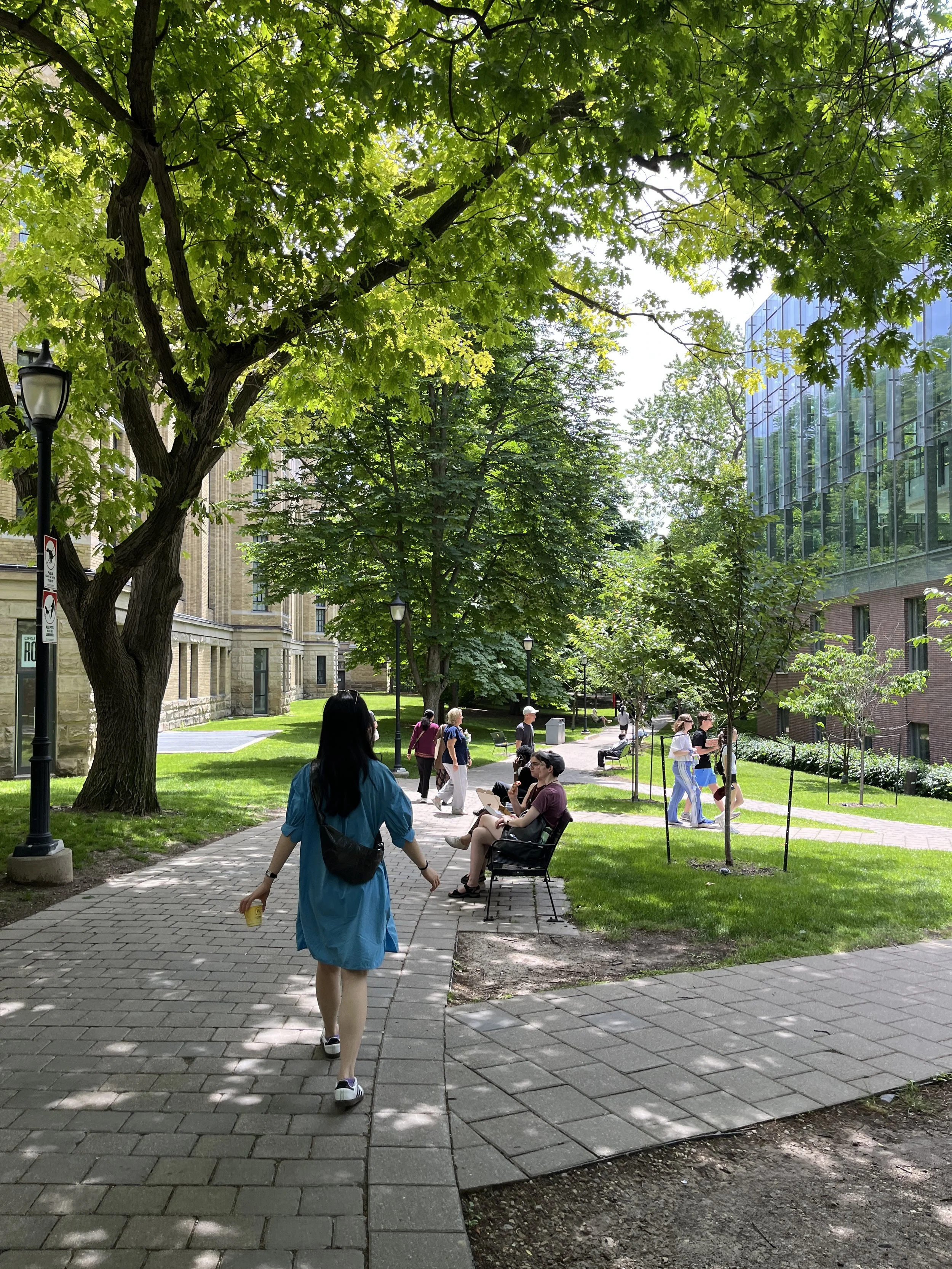Over the past few months, I’ve been rethinking what brings me joy and learning to be more in tune with how my body feels. Back to the basics. I don’t have all the answers yet, but I’ve gathered enough courage to take small steps forward without full clarity—trusting that clarity comes from action, not speculation.
2025 has been the year I’ve made the most progress in understanding myself—owning both the good and the bad. It’s freeing to feel more honest, accepting, and comfortable in my own skin. The reassuring news is confirming, yet again, that my anchors are so easily accessible and simple: reading to explore and writing to make sense of it in my own way. These have quietly guide how I make decisions and how I spend my time.
The Philosopher’s Walk in Toronto, my favorite footpath in college (June 2025)
This past weekend, I picked up When Breath Becomes Air by Paul Kalanithi because it somehow felt like the right timing and his writing was indeed deeply moving. Even though I’m not in the medical field, I felt strangely connected to Paul’s motivation for practicing neurosurgery and how he viewed his role as a medical practitioner. Like him, I also double majored in Literature and Life Science, and was struck by the way he brought a multidisciplinary lens to his work. His approach reminded me of what I strive for in my own role as a researcher: bringing more human-centered perspectives into how we apply emerging technologies to real-world problems.
Paul sees medical and neuroscience as the discipline where biology, morality, literature, and philosophy intersect. It never occurred to me that some of life’s biggest questions—about identity, death, and meaning—often arise most urgently in medical contexts. Paul originally considered studying biological philosophy, but chose to gain direct experience through practicing medicine instead. That tension deciding between abstract critique and hands-on impact echoes my own journey, where I’ve also chosen to be closer to applied research and product development rather than staying solely in behavioral science papers and literary theories. I wanted more direct impact and learnings from the messiness of implementation.
“The highest ideal was not saving lives—everyone dies eventually—but guiding a patient or family to an understanding of death or illness.” That line stayed with me. It’s not about heroism, it’s about guiding someone to make sense of the hardest things: what kind of life is worth living, and what quality of life is acceptable after treatment. In a strange way, it reminded me of my own work. Not because it’s equally weighty, but because research, too, is about helping teams understand perspectives that are often ambiguous, subjective, and deeply human. It’s about making space for hope, fear, love, beauty, envy, striving—things that don’t show up in dashboards or metrics, but are central to the experience of technology.
I was also struck by Paul’s reflection on the early meaning of the word patient: “one who endures hardship without complaint.” It’s a gentle reminder to meet people where they are. To see people not as problems to be solved, but as whole beings to be understood.
Toronto’s summer in King’s College Circle (June 2025)
Hope you’re enjoying the summer green as much as I am! (As you can tell, all the images are green and blue.) See you in the next post.

